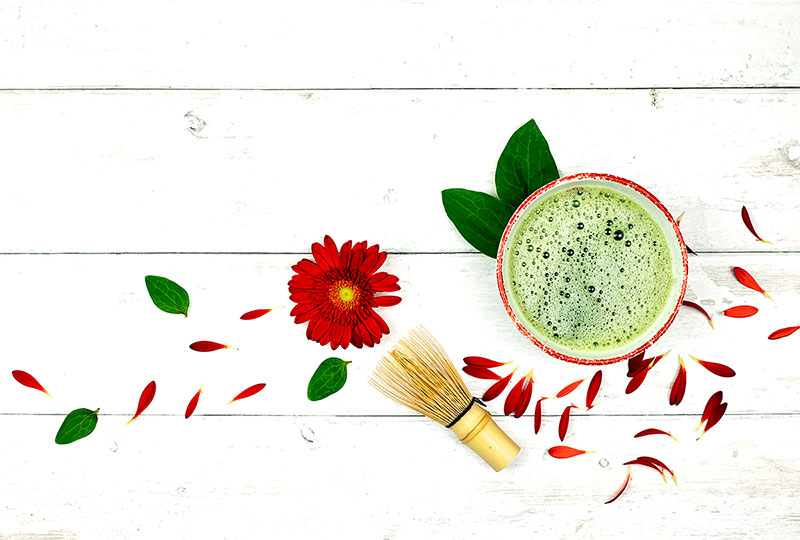How to Brew Matcha Tea
Matcha is the queen of all teas. This Japanese green tea is so simple, so pure, so unique and so complex at the same time it doesn’t have a counterpart in the world of tea. There is tea. And there is matcha. Matcha tea is served during Japanese tea ceremonies, so preparing the best one at home will take some practice.
What is matcha?
Although matcha is technically a powdered green tea, it’s often harvested from special tea cultivars and processed differently than regular tea powders. Tea leaves used for making matcha are called tencha, and they don’t contain any veins, stalks and stems. It’s respected both for the flavor, uniqueness and recently, health benefits.
How long do you let matcha steep?
Matcha is the only real tea you don’t steep. Or brew. Rather than steeping, brewing or infusing, matcha is simply dissolved in hot water. However, proper „dissolving“ matcha powder in hot water takes much more than just a kettle, a cup and a teaspoon. Making a perfect cup of this tea is a form of art. Matcha should be about gratitude, simplicity, respect, but also enjoyment and pure quality flavor.
Different ways to make matcha tea
You can make matcha in many ways. The best one is – the traditional way. You can use it to make lattes, matcha infused water, iced teas, frappes, milkshakes or any possible drink you can imagine. But the fun doesn’t stop here. There are thousands and thousands of delicious matcha recipes out there. It’s perfect in many cakes, desserts and ice cream, in cocktails and even in savory dishes.
Learn how to make matcha latte here.
How to make matcha in the proper way
To make matcha at home, you will need only a few basic utensils:
- chawan or a tea bowl,
- chashaku or a tea scoop,
- chasen or a bamboo whisk
- sifter
You can replace chawan and chashaku with a regular bowl and teaspoon, but that will take away a lot of magic and sophistication from the ritual of brewing and drinking matcha. Because yes, drinking and preparing matcha should be a ritual that you enjoy.
The following instructions are for making usucha or thin tea, the most common way of drinking matcha at home and for beginners. For making koicha or thick tea, you will need a special chasen, very high grade matcha powder suitable for making koicha, less water and much more tea powder.
Instructions:
- Arrange all teaware and utensils in front of you and make sure they are all clean and dry.
- Use only fresh spring water. Bring it to a boil, then let it cool down to around 176°
- Always preheat your tea bowl by pouring hot water in and out and dry it with a tea towel.
- Sift 2 chashaku or ½ teaspoons of matcha through a sifter into a dry tea bowl.
- Pour around 70 ml of water into the bowl. You can use a bit more water, but never use a full cup.
- Whisk the matcha using tea whisk, making “w” hand movements until you get a smooth drink with a light froth.Some types will froth less, some more.
- Drink it immediately.
- Clean tea utensils with water right after use.
Things you should never do when preparing matcha
- Never use wet tea scoop for scooping matcha powder. Matcha has a very short shelf life and should be used within a month or so. Using wet tea scoop or spoon will ruin it immediately.
- Don’t use boiling water for making matcha. You will end up with a very bitter drink.
- Never use unsifted matcha powder unless you want lumps of powder in your tea bowl.
- Always be vigorous, but gentle with chasen. Prongs can easily break. Don’t use force and avoid pressing chasen onto the bottom.
- Never let matcha cool down or sit for hours. It will lose all the flavor and texture.
- Don’t forget to clean your chasen or it will be very difficult to clean it later. By taking a proper care of your tea utensils you are prolonging their lifespan.





